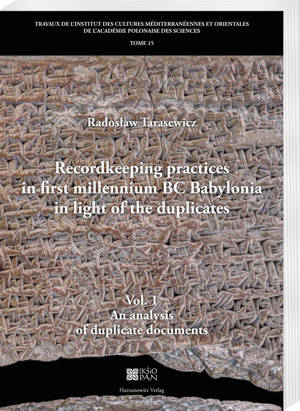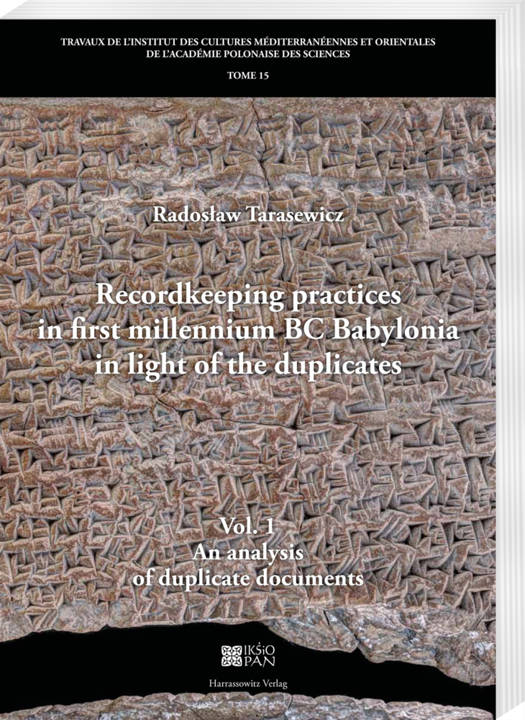
- Afhalen na 1 uur in een winkel met voorraad
- Gratis thuislevering in België vanaf € 30
- Ruim aanbod met 7 miljoen producten
- Afhalen na 1 uur in een winkel met voorraad
- Gratis thuislevering in België vanaf € 30
- Ruim aanbod met 7 miljoen producten
Zoeken
Recordkeeping Practices in First Millennium BC Babylonia in Light of the Duplicates
Vol. 1. an Analysis of Duplicate Documents
Radoslaw Tarasewicz
Paperback | Engels | Travaux de l'Institut des Cultures Méditerranéennes et Orientales de l'Académie Polonaise des Sciences | nr. 15
€ 235,95
+ 471 punten
Omschrijving
Recordkeeping practices in first millennium BC Babylonia in light of the duplicates provides a study of duplicate documentary records from different archives in Babylonia. Volume I contains a detailed analysis, while volume II presents transliterations and translations of an extensive number of chronicle documents, including previously largely unpublished material. The process of making duplicate tablets, their features and archival provenances is the subject of this publication. The main topic is treated in a variety of ways considering the external and internal characteristics of the tablets. In many cases, the analysis of single duplicate examples is supplemented by data taken from other tablets. These usually belong to the scribe whose name appears in certain duplicates. By implementing these issues, the study offers an unprecedented level of massive and meticulous analysis of the physical characteristics of clay tablets, shapes and variants of signs with thorough attention paid to the textual nuances and minutiae. The two volumes also deal extensively with palaeographic and orthographic details, which have generally been neglected until now, as the cuneiform script of the Neo- and Late-Babylonian age is very difficult to decipher compared to earlier periods. The subject is presented in the form of handwritten autographs of cuneiform clay tablets, a large number of handwritten autographs of cuneiform signs, and a quite considerable collection of original photographs.
Specificaties
Betrokkenen
- Auteur(s):
- Uitgeverij:
Inhoud
- Aantal bladzijden:
- 621
- Taal:
- Engels
- Reeks:
- Reeksnummer:
- nr. 15
Eigenschappen
- Productcode (EAN):
- 9783447120630
- Verschijningsdatum:
- 11/06/2025
- Uitvoering:
- Paperback
- Formaat:
- Trade paperback (VS)
- Afmetingen:
- 210 mm x 28 mm
- Gewicht:
- 426 g

Alleen bij Standaard Boekhandel
+ 471 punten op je klantenkaart van Standaard Boekhandel
Beoordelingen
We publiceren alleen reviews die voldoen aan de voorwaarden voor reviews. Bekijk onze voorwaarden voor reviews.








